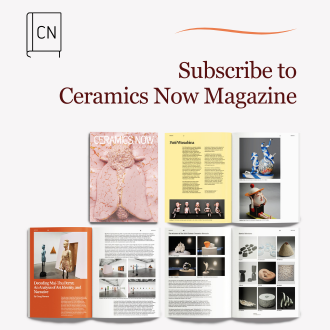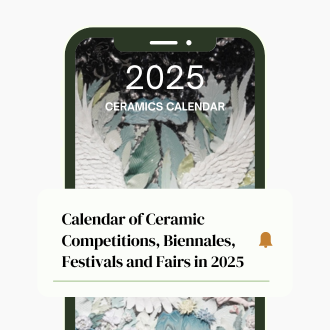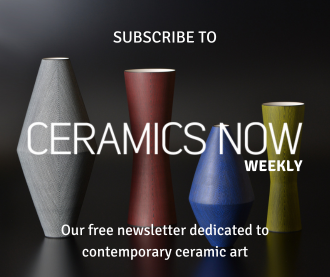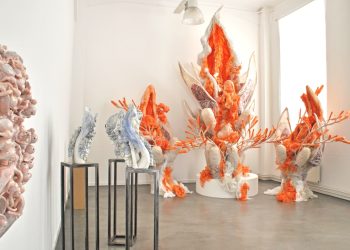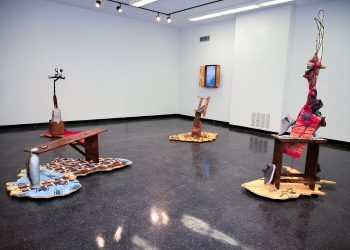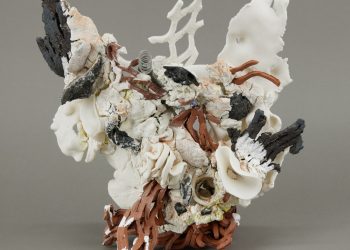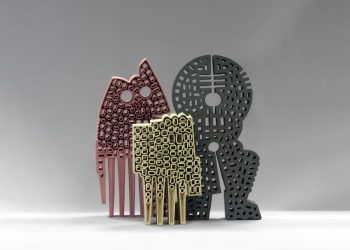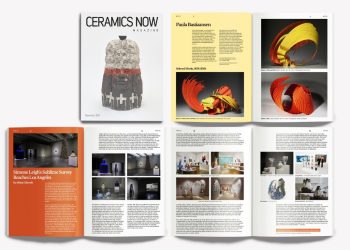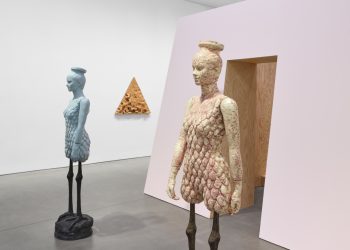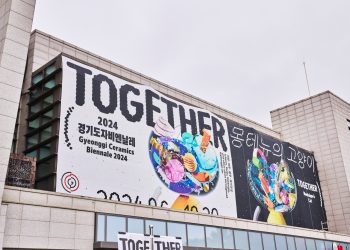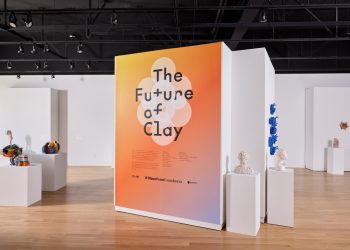Paula Bastiaansen is a ceramic artist who lives and works in Zundert, Netherlands. She studied Ceramic Art at the Royal Academy of Art and Design in ’s-Hertogenbosch, graduating in 1983. Her work is known for exploring movement, rhythm, fragility, and translucency, often using bone china porcelain for its exceptionally fine texture.
Initially, Paula’s sculptural pieces were bowl-shaped, but over time, her work evolved to focus on space itself. This shift has led her to create large-scale installations that cover walls and floors, introducing exciting new challenges in scale and form. In recent years, vibrant colors, such as red, yellow, and green, have taken on an essential role in her work, adding energy and meaning to her pieces.
Her work has been exhibited internationally and is part of significant collections, including the Museum Boijmans Van Beuningen in Rotterdam, the Princessehof Museum in Leeuwarden, the International Ceramic Museum in Gyeonggi, Korea, the Taipei County Ceramics Museum in Taiwan, and the Museo Internazionale delle Ceramiche in Faenza, Italy. Paula has received numerous accolades, including the top prize at the XVI Bienal Internacional Cerámica Artística in Aveiro, Portugal, in 2023 and the Silver Prize at the International Ceramic Art Award in Lyon in 2017.
Visit Paula Bastiaansen’s website and Instagram page.
Featured work
Selected works, 2018-2024


“The search for movement, rhythm, fragility, weightlessness, and translucency defines the theme of my work. Bone china porcelain, chosen for its exceptionally fine texture, is my material of choice.”
Working Method:
I begin each piece with a drawing, which helps me plan how the pattern will unfold within the mold and guides the construction process. Next, I choose the colors and prepare the clay by tinting it as needed. I roll out extremely thin layers of both white and colored clay. The pattern is formed piece by piece; for example, a strip of white is followed by a strip of blue, and so on.
As I assemble the strips onto the drawing, it’s crucial to maintain the clay’s moisture. I use wet patches and cover the strips with plastic to preserve the right moisture level. Once the drawing is fully completed according to the desired pattern, I carefully place and construct the form within a stoneware mold, which I prepared beforehand. This is a critical stage—it takes one or two days to prepare, but the actual construction within the mold happens in just minutes. After a few days of drying, the form is ready for the kiln, where it is fired at 1260°C.
For more complex, multi-part objects, I use a two-component material to assemble the pieces after firing.
A Note on My Work:
Initially, my objects took the form of sculptures, easily recognizable as bowl-shaped. Even as separate fragments, they engaged in a dialogue with the surrounding space. Over time, these objects evolved to radiate from a central point. Eventually, quite instinctively, this center disappeared. In hindsight, this felt like a natural progression, though at the time it marked a drastic shift. From that moment, space itself became the focal point of my work.
Recent Developments:
In recent years, my work has transitioned from three-dimensional forms in space to three-dimensional shapes on the wall. More recently, it has moved back into three-dimensional installations. This feels like a significant evolution, as my work can now expand to larger scales—covering entire walls or floors, which was previously impossible. This transformation introduces an exciting challenge: developing these installations further and experimenting with bold, vibrant colors.
The Role of Color:
Color has also taken on a more important role in my work in recent years. Consider the red objects or the pieces featuring red, yellow, and green. Color adds a different kind of power and dimension to an object, infusing it with new energy and meaning.


